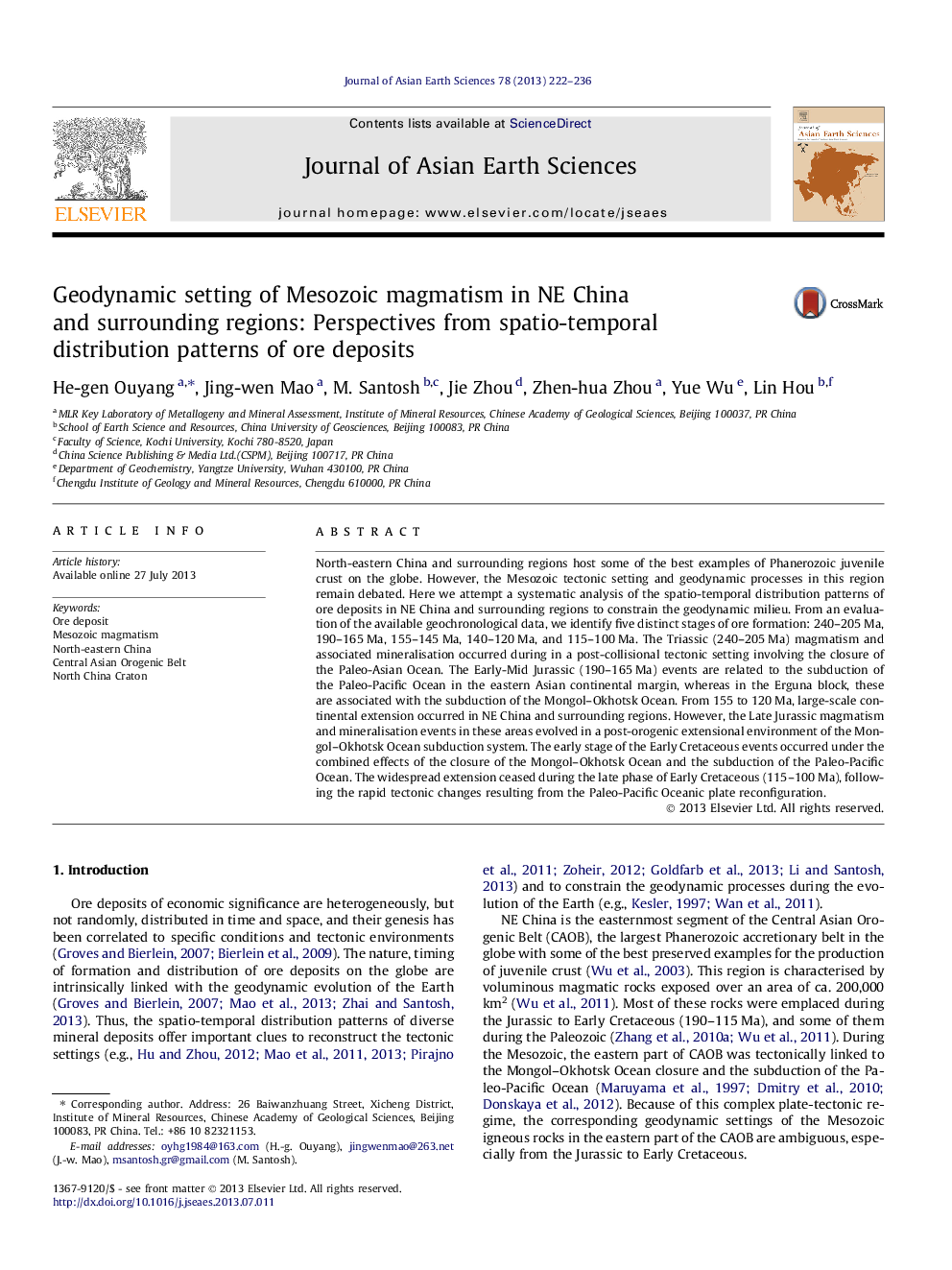| کد مقاله | کد نشریه | سال انتشار | مقاله انگلیسی | نسخه تمام متن |
|---|---|---|---|---|
| 4730844 | 1640389 | 2013 | 15 صفحه PDF | دانلود رایگان |
• Five stages of Mesozoic mineralisation have been identified.
• 190–165 Ma events in the Erguna block occurred during the subduction of MOB.
• 140–120 Ma events are associated with the closure of MOB and the subduction of PPO.
North-eastern China and surrounding regions host some of the best examples of Phanerozoic juvenile crust on the globe. However, the Mesozoic tectonic setting and geodynamic processes in this region remain debated. Here we attempt a systematic analysis of the spatio-temporal distribution patterns of ore deposits in NE China and surrounding regions to constrain the geodynamic milieu. From an evaluation of the available geochronological data, we identify five distinct stages of ore formation: 240–205 Ma, 190–165 Ma, 155–145 Ma, 140–120 Ma, and 115–100 Ma. The Triassic (240–205 Ma) magmatism and associated mineralisation occurred during in a post-collisional tectonic setting involving the closure of the Paleo-Asian Ocean. The Early-Mid Jurassic (190–165 Ma) events are related to the subduction of the Paleo-Pacific Ocean in the eastern Asian continental margin, whereas in the Erguna block, these are associated with the subduction of the Mongol–Okhotsk Ocean. From 155 to 120 Ma, large-scale continental extension occurred in NE China and surrounding regions. However, the Late Jurassic magmatism and mineralisation events in these areas evolved in a post-orogenic extensional environment of the Mongol–Okhotsk Ocean subduction system. The early stage of the Early Cretaceous events occurred under the combined effects of the closure of the Mongol–Okhotsk Ocean and the subduction of the Paleo-Pacific Ocean. The widespread extension ceased during the late phase of Early Cretaceous (115–100 Ma), following the rapid tectonic changes resulting from the Paleo-Pacific Oceanic plate reconfiguration.
Journal: Journal of Asian Earth Sciences - Volume 78, 15 December 2013, Pages 222–236
